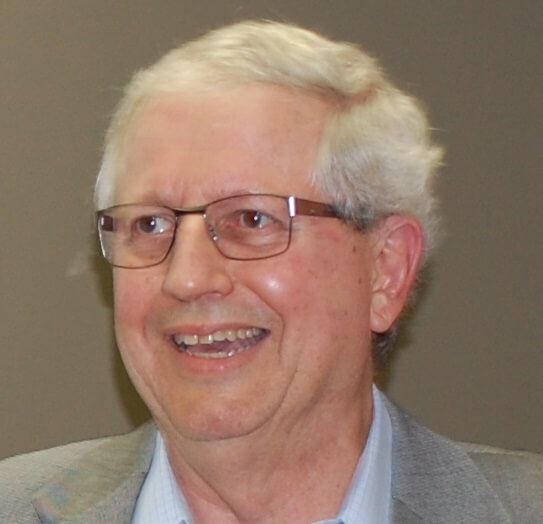Providing newcomer settlement services to northern and rural areas is a challenge, especially when municipalities and employers are not prepared for an influx of newcomers, which is now just beginning.
The North Bay & District Multicultural Centre is the only settlement agency serving the region of Northeastern Ontario from Parry Sound in the south to Hearst in the north, including the regional centres of North Bay and Timmins. Our main office is in North Bay and we have a satellite office in Timmins, a four-hour drive north.
It takes eight hours to drive from Parry Sound to Hearst, so it is a huge territory, comprising 17 per cent of the land mass of Ontario. Some of the smaller municipalities include Mattawa, Sturgeon Falls, Temiskaming Shores, Kirkland Lake, Iroquois Falls, Hearst, Kapuskasing, and Cochrane.
The population of North Bay is 54,000 and Timmins has a population of 45,000. The catchment area we serve has a population of 240,000.
We have been in existence only six years and had an entrepreneurial nature from the outset, fully appreciating the close relationship between immigration and economic development in Northern Ontario.
In our six years of operation the number of permanent residents we serve has quadrupled and we have seen a regional rise in the number of temporary foreign workers and international students.
Mining jobs
Permanent residents and temporary workers are being hired by the many international mining companies we have in the region, plus those companies serving the mining industry. Mining engineers, millwrights, welders and skilled tradespeople are particularly in demand. The health care, government, and service and hospitality sectors are constantly looking for people as well. Immigrant entrepreneurs are arriving and purchasing hotels, convenience stores, gas stations and franchise operations, or starting their own businesses, such as pharmacies and restaurants.
For Northeastern Ontario this is a new phenomenon. The last wave of immigration to fill mining jobs in the north was many decades ago.
We have two settlement workers in North Bay and one in Timmins and we are not funded to serve temporary foreign workers or international students. But, as with most settlement agencies, we do not turn people away. When we looked at the numbers of international students we served from Canadore College and Nipissing University in North Bay last year we decided to charge the institutions, not the students, for the service.
The college readily agreed and the university is still thinking about it. Similarly, when one local employer showed up at 4:45 on a Friday afternoon with six welders who are temporary foreign workers in tow, we thought it was time employers paid as well.
We now have an agreement with that one employer, who has a dozen temporary foreign workers—11 welders and one engineer from Tunisia and the Philippines. Most of them want to become permanent residents and bring their families to North Bay. We are aware of discussions at both the provincial and federal levels to include service to international students and temporary foreign workers in settlement funding, but there is nothing in effect at present.
Because we hold the contribution agreement for our Local Immigration Partnership and lead that initiative, we have a broader mandate and more tools at our disposal than some settlement agencies. The LIP in Timmins is led by the Timmins Economic Development Corporation, a key partner.
Mobilizing a region
Seeing the coming changes to the immigration system–economic immigration is expected to increase to 63 per cent of the total in 2014 and the Expression of Interest program is expected to be rolled out by Citizenship and Immigration Canada in January of 2015—we saw the need to get our entire region mobilized. With the coming changes employers will be driving Canada’s immigration program more than they did previously.
While we have been responsible for servicing a huge area in fact we haven’t been doing a great job outside North Bay and Timmins. Dropping off brochures in a strategic fashion and encouraging social service agencies to have immigrant clients contact us by our toll-free number or Skype has not worked well. We now realize that personal contact is required to engage the community and newcomers.
In October we invited municipalities and government funders to attend an immigration symposium in Temiskaming Shores, a scenic city roughly in the middle of our catchment area. Pathways to Prosperity was a sponsor and presented at the event. We presented the North Bay and Timmins settlement agency and LIP models and had a panel discuss the issues they are facing.
Two economic development officers talked about immigrants purchasing local businesses and settling in their areas but having limited settlement and integration support. A business owner talked about the challenges of finding skilled labour and the LIP coordinator from Renfrew District talked about the difficulty of operating a LIP without a supporting settlement agency.
We had a working group meeting two weeks later and devised a plan to address the issues raised at the symposium.
The way forward
We are fortunate to have access to both provincial Northern Ontario Heritage Fund Corporation and federal FedNor funding through Industry Canada for economic development activities. The plan involves seeking funding support from those two bodies, plus municipalities, the Ministry of Citizenship and Immigration and CIC to do the following:
- Provide resources for itinerant settlement counsellors based at the North Bay and Timmins & District Multicultural Centres to visit participating municipalities to provide settlement and integration services to immigrants.
- Provide resources for HR North to expand into the smaller municipalities. The HR North project is in its incubation period and is not yet sustainable. HR North (www.hrnorth.ca) is a project of our North Bay LIP’s Immigrant Employers’ Council and is a head-hunting service for purple squirrels—those very difficult to find people with a skill set not normally found locally. It uses the Skills International database of some 15,000 skilled international professionals living in southern Ontario and adds university and college graduates.
- Create Immigrant Employers` Councils in each municipality. There is an urgent need for employers to educate themselves about immigration, the Expression of Interest model, the need to create a welcoming community to retain newcomers and a myriad of other issues revolving around immigrant attraction and retention.
- Assist municipalities with immigrant attraction and retention. The project will add practical steps to existing municipal strategic plans to move municipalities’ immigration efforts forward.
- A region-wide advertising campaign to both set the stage for creating welcoming communities and providing settlement information to newcomers is seen as a necessary project component. Immigration has not been top-of-mind for smaller Northern Ontario communities.
- Pathways to Prosperity will assign researchers to follow this project, systematically analyze key components that contribute to success, and produce a research report and evaluation at project’s end that will supplement a ‘how-to’ manual.
- How-to’ Manual. Extensive documentation will be kept throughout the project for both the researcher/project evaluator and the project principals, who will prepare the manual.
This is part of our strategy to address the changing landscape in our region. So far it has verbal support from one major funder and four municipalities and we are optimistic that we will be in the implementation phase in early 2014.
Don Curry is the executive director of the North Bay & District Multicultural Centre. He is a member of the board of directors of Pathways to Prosperity and the Ontario Council of Agencies Serving Immigrants.
Don Curry is the President of Curry Consulting, which provides immigration solutions for rural and northern Canadian municipalities, and an NCM director (2022 - 23). He is also the Founding Executive Director of The North Bay & District Multicultural Centre, a multi-award winning immigrant settlement agency with offices in North Bay and Timmins. It is the lead agency for the Local Immigration Partnership project, the North Bay Newcomer Network and the Timmins Local Immigration Partnership.





